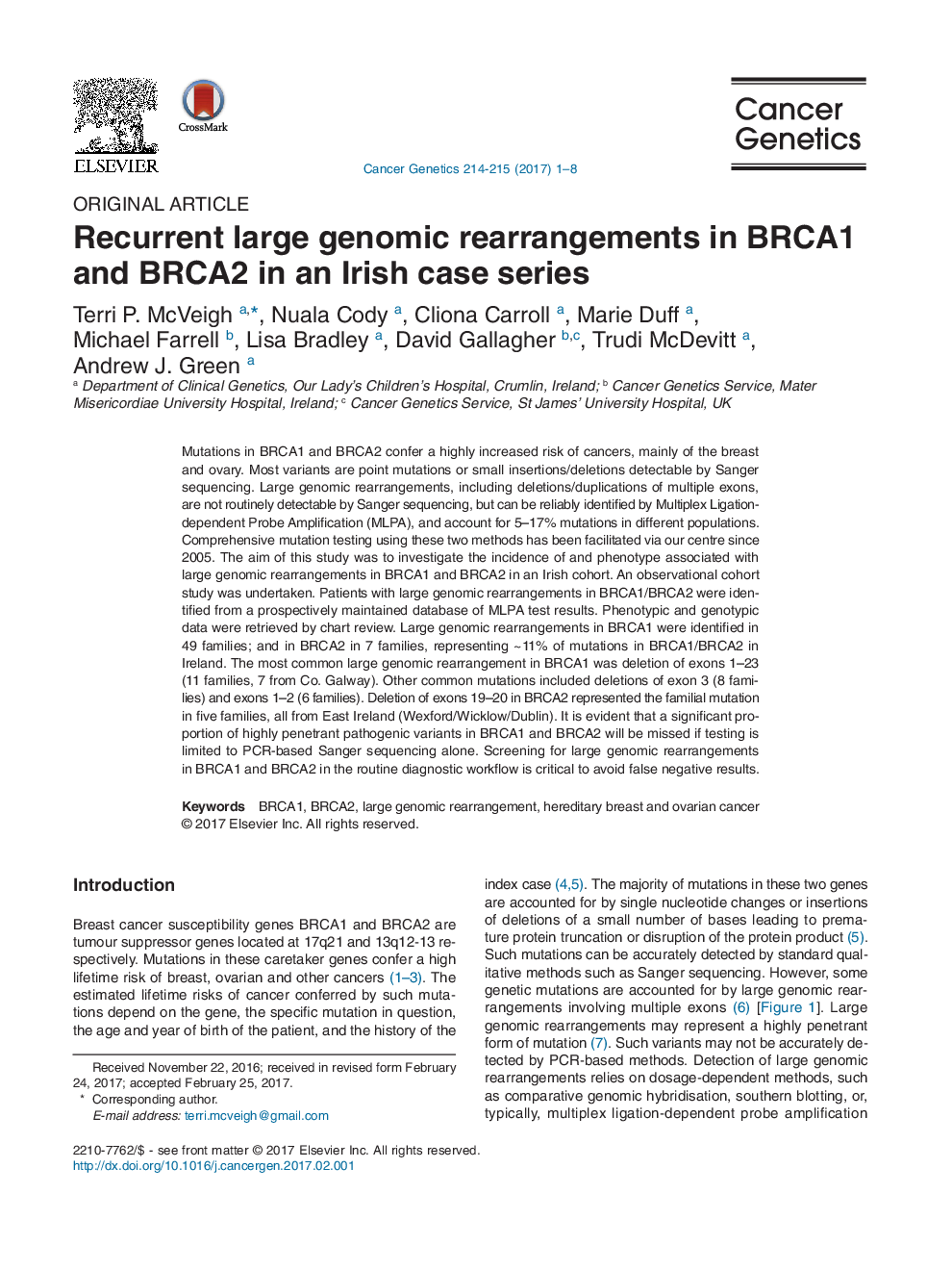| Article ID | Journal | Published Year | Pages | File Type |
|---|---|---|---|---|
| 5524948 | Cancer Genetics | 2017 | 8 Pages |
â¢We present a national cohort study of carriers of large genomic rearrangements in BRCA1 and BRCA2.â¢As expected, LGRs were more commonly identified in BRCA1 (49 families) than BRCA2 (7 families).â¢A number of recurrent LGRs were identified in BRCA1: deletions of Exons 1-23; Exon 3; and Exons 19-20.â¢One LGR in BRCA2, deletion of Exons 19-20 was identified in five unrelated families.â¢There was regional variation in distribution of LGRs, with most recurrent LGRs detected in the West.
Mutations in BRCA1 and BRCA2 confer a highly increased risk of cancers, mainly of the breast and ovary. Most variants are point mutations or small insertions/deletions detectable by Sanger sequencing. Large genomic rearrangements, including deletions/duplications of multiple exons, are not routinely detectable by Sanger sequencing, but can be reliably identified by Multiplex Ligation-dependent Probe Amplification (MLPA), and account for 5-17% mutations in different populations. Comprehensive mutation testing using these two methods has been facilitated via our centre since 2005. The aim of this study was to investigate the incidence of and phenotype associated with large genomic rearrangements in BRCA1 and BRCA2 in an Irish cohort. An observational cohort study was undertaken. Patients with large genomic rearrangements in BRCA1/BRCA2 were identified from a prospectively maintained database of MLPA test results. Phenotypic and genotypic data were retrieved by chart review. Large genomic rearrangements in BRCA1 were identified in 49 families; and in BRCA2 in 7 families, representing ~11% of mutations in BRCA1/BRCA2 in Ireland. The most common large genomic rearrangement in BRCA1 was deletion of exons 1-23 (11 families, 7 from Co. Galway). Other common mutations included deletions of exon 3 (8 families) and exons 1-2 (6 families). Deletion of exons 19-20 in BRCA2 represented the familial mutation in five families, all from East Ireland (Wexford/Wicklow/Dublin). It is evident that a significant proportion of highly penetrant pathogenic variants in BRCA1 and BRCA2 will be missed if testing is limited to PCR-based Sanger sequencing alone. Screening for large genomic rearrangements in BRCA1 and BRCA2 in the routine diagnostic workflow is critical to avoid false negative results.
